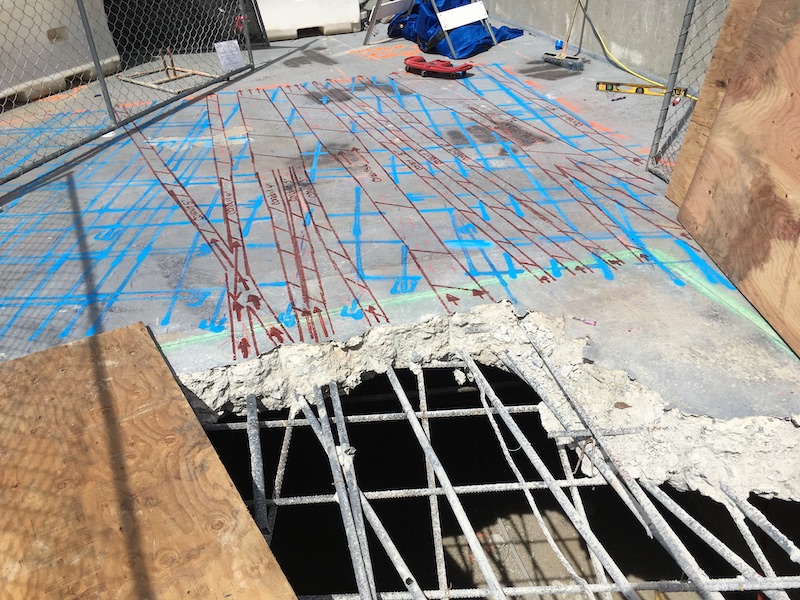The Importance of Accurate Concrete Scanning in Finding Underground Hazards
In the realm of construction and facilities development, the relevance of precise concrete scanning can not be overstated. Beneath the apparently strong ground lie complex networks of energies, pipelines, and other subsurface frameworks that are typically undetectable to the naked eye. The ability to accurately discover and map these underground risks is not just an issue of benefit but an essential element of making sure the security of both construction employees and the honesty of the task itself. By releasing sophisticated scanning innovations and methods, experts can reveal covert dangers, stop costly problems, and ultimately lead the means for smoother and much safer building undertakings.
Advanced Scanning Technologies for Detection
Sophisticated radar systems are revolutionizing the field of underground detection by offering unparalleled accuracy and efficiency. These innovative scanning technologies utilize ground-penetrating radar (GPR) to produce comprehensive pictures of subsurface structures, offering insights into what lies below the surface area with exceptional clearness. By emitting high-frequency pulses right into the ground and gauging the representations, radar systems can determine variants in material composition and discover below ground dangers such as voids, cable televisions, and pipelines.
One of the key advantages of these advanced radar systems is their non-invasive nature, permitting thorough evaluations without causing damages to the existing structures. This not just makes sure the safety of the surrounding setting yet additionally decreases the requirement for costly fixings or disturbances to recurring construction jobs. In addition, the real-time information given by these scanning modern technologies enables quick decision-making and enhances general task performance.
Importance of Subsurface Mapping

Accurate subsurface mapping helps in protecting against expensive damages to existing underground facilities, reducing the risk of accidents, and preserving project timelines. It enables task managers to make informed decisions regarding site planning, equipment release, and source allotment. Furthermore, subsurface mapping permits much better sychronisation amongst various teams dealing with a job and aids in abiding by regulatory requirements associated with underground energy discovery.
Mitigating Dangers in Construction Projects
Efficient danger mitigation techniques are crucial for making certain the success and security of construction jobs. One essential facet of mitigating risks in building projects is thorough planning and analysis at the preliminary stages.
In addition, developing clear interaction channels among all project stakeholders and ensuring strict adherence to safety procedures are important components of threat mitigation. Routine examinations, quality control steps, and monitoring of job progress can help in determining and addressing any emerging dangers immediately. Moreover, having contingency strategies in position for unanticipated obstacles can considerably lower the effect of disruptions on the project. By proactively implementing robust risk mitigation approaches, construction jobs can minimize hold-ups, cost overruns, and safety cases, eventually resulting in successful job end results.

Preventing Pricey Damages and Delays
To reduce monetary losses and task troubles, efficient methods should be executed to prevent expensive problems and Extra resources hold-ups in construction tasks. Determining these blockages early on aids in preparing the job design a lot more efficiently and staying clear of possible problems during excavation.
Furthermore, purchasing training programs for building workers on the significance of concrete scanning and secure excavation methods can substantially lower the danger of crashes and hold-ups. Clear communication networks in between job supervisors, engineers, and on-site workers are additionally vital to ensure that everybody recognizes the prospective risks and complies with the essential methods to avoid pricey problems. By focusing on positive actions like concrete scanning and advertising a culture of safety and security and awareness, construction jobs can reduce the financial influence of unexpected below ground blockages and prevent costly delays.
Ensuring Safety And Security of On-Site Worker
By focusing on aggressive steps such as comprehensive training programs and clear interaction channels, building tasks can guarantee the security of on-site personnel in the middle of the prospective threats spotted via concrete scanning. Correct training equips employees with the expertise and skills needed to navigate building websites safely, specifically when dangers are identified through scanning procedures. Training should cover threat recognition, emergency situation procedures, and the proper utilization of individual protective equipment to alleviate threats effectively.
Furthermore, establishing clear interaction channels is vital for sharing info concerning identified dangers quickly. This more info here ensures that all on-site employees understand potential dangers and can take necessary safety measures to avoid accidents. Regular security instructions, toolbox talks, and consistent updates pertaining to scanning results aid maintain everyone informed and aggressive in preserving a risk-free functioning setting.
Additionally, implementing rigorous adherence to security methods and guidelines, performing routine security audits, and promoting a society of security awareness among employees are crucial elements in making certain the well-being of on-site personnel during building and construction jobs - RainierGPR Concrete Scanning. Proactive security measures not only shield workers check it out from harm yet additionally add to the total success and effectiveness of the job
Conclusion
Using innovative scanning modern technologies and subsurface mapping assists reduce dangers in building tasks, avoiding expensive damages and delays. It is imperative for construction business to prioritize the usage of exact scanning approaches to reduce possible risks and make certain a smooth building and construction procedure.
By proactively carrying out robust risk reduction methods, building tasks can lessen delays, price overruns, and safety cases, ultimately leading to successful project end results. - RainierGPR Concrete Scanning
To minimize monetary losses and job obstacles, efficient approaches should be executed to protect against expensive problems and delays in building projects. By focusing on proactive actions like concrete scanning and advertising a culture of security and awareness, building and construction tasks can lessen the financial influence of unforeseen underground obstructions and stay clear of costly hold-ups.
By prioritizing positive measures such as comprehensive training programs and clear interaction channels, construction tasks can make certain the safety of on-site employees amid the possible threats identified via concrete scanning. Using innovative scanning innovations and subsurface mapping assists reduce dangers in building jobs, preventing costly problems and hold-ups.